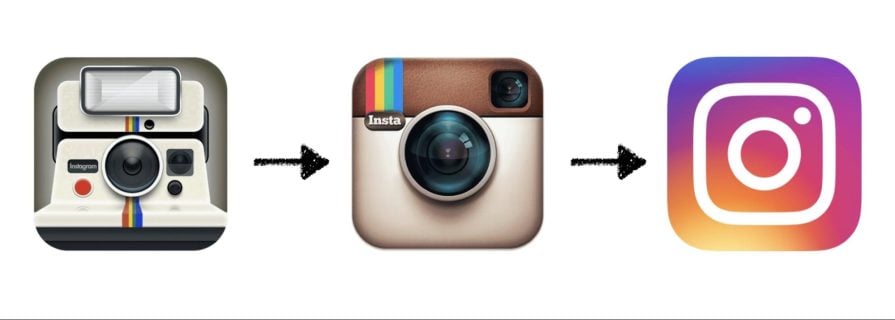
You’re a UX designer for a brand, and this brand has been in the market for a while now. But the company that owns the brand realizes there’s something amiss with the brand’s marketing strategy. They decide to rebrand. And rebranding can change your life as a designer.
Rebranding will change your life for the better, though. It’ll bring in higher income, more consumers, and a unique vision for the brand.
Although it can be quite a complex process, a successful rebranding game plan can refresh your brand so it appeals to more consumers. Whether it be breaking into a bigger international market or obtaining customers you wouldn’t have reached before, rebranding is essential for a brand that wants to grow.
In this blog, we’ll explore the process of rebranding. I’ll delve into the types of rebranding, the importance, the why, the process, and the role of a UX designer in rebranding.
What is rebranding?
According to Forbes, it takes roughly seven seconds for a business to make a good impression on its audiences. Customers’ desires and needs can change on a whim, especially due to circumstances brought on by celebrity gossip, politics, or emergency situations (not too long ago, businesses were hit with the global pandemic).
It’s very difficult to make it in an oversaturated marketplace. A brand that sees a significant drop in sales or weathers a loss in reputation and recognition may fail in the future, so it may choose to rebrand.
Rebranding is a concept and method in which an existing brand develops a new, integrated identity. This could involve changing the logo, altering the company’s mission and vision, or updating the brand’s messaging.
The techniques vary, but rebranding always aims to change the brand’s identity so that it resonates with newer audiences.
And rebranding is an intricate process that must be executed correctly. Otherwise, you risk losing your existing clientele or failing to attract new ones.
Types of rebranding
Hinging on what aspect of your brand you want to change and the extent of the rebrand, there are three well-acknowledged types of rebranding:
1. A complete rebrand
Complete rebranding occurs when a business undergoes a full 180-degree transformation. It changes its name, identity, logo, products, and voice. This often happens after a major event like a merger or acquisition, a new owner, or a shift in business direction. It can also be a response to negative press or reputation damage.
Complete rebranding involves extensive research and often includes brand repositioning, where the brand shifts its place in the market to target a new audience.
A complete rebrand is often confused with brand repositioning. Here’s what you need to know.
Brand repositioning occurs when a brand changes its status in the marketplace by changing its brand messaging, visual identity, and storytelling. The brand identifies a new brand position and changes everything to align with that position.
At times, businesses will make a brand positioning move without a total rebrand, but a complete rebrand will encompass brand positioning.
Essentially, a full rebrand means that a business overhauls its existing brand identity with new values, mission-vision statements, and brand guidelines. For example, a jewelry brand might start to go into retail, and rebrand to shift their focus to being a new clothing brand.
Since rebranding involves so many changes, you have to do the right research and make the right changes to your brand to appeal to new markets.
For UX designers, a complete rebrand will provide opportunities for showing your skillset. You may be tasked to create a design system to define what global changes need to be prioritized.
Some tasks for UX designers in the design system include overhauling a logo and replacing it with a new logo, adopting a new font, creating and applying a new color palette, or redesigning key navigational components on the website.
A complete rebrand is extremely risky, but it could also be extremely profitable.
2. A partial rebrand
A partial rebrand will mean updating specific aspects of the brand identity while enhancing and retaining its most recognizable features.
Some elements a brand usually updates in a partial rebrand are changing its visual identity for a more modern approach, reflecting an organizational change such as a merger or acquisition to diversify the brand’s identity, or responding to a perception of the brand to stay relevant.
Instead of a brand overhaul, as would happen in a complete rebrand, a partial rebrand might involve modernizing the logo, refreshing the color palette, or updating the brand’s messaging to appeal to a new audience.
Partial rebranding is safer — there’s less confusion about the brand with existing consumers, thus allowing the brand to retain its existing clientele. Not changing the brand’s vision, pillars, and identity markers that make it who it is means partial rebranding helps retain loyal customers while striving to be more relevant to a new audience.
A partial rebrand can also occur to heighten the impact of the brand in the overall marketplace, especially after a strike to their reputation or a loss in sales.
When Heinz did a partial rebrand, it rebranded its product, Kranch, a hybrid of ketchup and ranch, and renamed it “Ketchup and Seemingly Ranch.” This simple but modern messaging enhanced and invigorated their already existing slogan, “It has to be Heinz.” It worked well!

For UX designers, a partial rebrand takes on aspects that a complete rebrand would not. For example, instead of creating a whole new design system, the UX designer would target specific aspects of the brand in order to fix what’s broken.
This may include a new color palette, but you would not change the logo. Or maybe there would only be a tweak to the visual language in order to further encapsulate what you want your users to see with the brand, but it wouldn’t overhaul all the design elements at once.
3. A brand refresh
A brand refresh is a lighter, less extensive rebranding effort. It might involve updating the logo, changing the font, or tweaking the color scheme. The goal is to modernize the brand’s appearance without altering its core identity.

A brand refresh is all about reinventing yourself rather than changing yourself. You, as a UX designer, can refresh your company’s branding in terms of things like the color scheme. It all comes down to how you define yourself, and how you are reflecting that into your UX designs.
If your brand has been around for a while, this could mean speaking to a new generation of audiences — messaging in a more modern brand language.
For example, Gucci, under a new director, started doing ad campaigns with the slogan “It’s so Gucci!” They branded the new slang Gucci as an adjective that means “cool.” It caught on well on the main stage, with Gen Zs vibing out to the slogan in their own TikToks. Even to this day, “It’s so Gucci” is a pop culture lingo that means “It’s so cool.”
This one slogan, because of its catching onto pop culture, allowed Gucci to enhance its brand image to a new generation that, without it, may have still thought only their moms would wear the brand.
Why rebrand?
There are different reasons why brands might fail to attract consumers’ attention. Their name may be too catchy, their logo may be too flashy, or their marketing strategy may be unclear.
But it’s not so dire as the prospect of failure.
Most of the time, companies choose to rebrand based on new and current information they’ve obtained regarding audience perception of their brand. They might see a drop in sales or clicks and pinpoint a certain reason why they need to rebrand. Sometimes, it also has to do with the saturated market, and they have to rebrand to keep up with the competition.
Rebranding is most important for attracting new customers, retaining existing clientele, and improving brand awareness and recognition in the market.
Rebranding can become a strategy for those brands that want to keep growing over the long haul. Whether complete, partial, or a refresh, rebranding can offer numerous benefits:
- Increased sales — By reaching new markets and engaging new customers
- Enhanced brand image — Aligning the brand with modern values and trends
- Internal motivation — Reinvigorating the company with a new vision that inspires employees and stakeholders
- Greater market presence — A refreshed brand can stand out in a crowded marketplace, helping the company remain competitive
Steps to successful rebranding
Step 1: Conduct market research and analysis
The first step to rebranding is finding out if you need to rebrand at all. This is done through thorough market research and analysis. Maybe there’s a competitor in the market with a similar brand identity to yours, or maybe there’s a demographic you need to tap into.
Right at the beginning, determine whether you need to do a complete rebrand, a partial rebrand, or a brand refresh.
Step 2: Define the new brand identity
Once you have the data to prove it, you can start to define your brand identity. If your competitor’s brand identity is similar to yours, think about changing your services and products, your name, your slogan, or your visual palette.
As a UX designer, you can work closely with other teams to align the rebrand with your user’s needs. You define your brand’s visual language to reflect your company’s mission vision, brand pillars, or brand values — to better serve your users.
Sometimes, brands need to reinvent how they communicate with their audience, and you, as a UXer, can help bridge the gap by redefining the style guide, being consistent with visual elements, and propagating your brand’s messages through visual communication.
At this step, you would embark on design thinking exercises such as empathy mapping, which focuses on a user’s thoughts and emotions during their experiences with the brand. Or you can use persona creation to create personas to better understand your target audience.
Step 3: Conduct UX research
Before they can implement their company’s rebranding strategy, a UX designer can help rebrand by doing due UX research. This research aims to understand how users interact with a product.
UX research methodically studies users to inform and improve a team’s decision-making. This can be how customers use their product, what issues they experience, and where the product isn’t meeting their needs. Follow these steps:
- Define persona and user journeys — Look at the customer’s experience, answering questions like Who is my ideal customer? What are my user’s behavioral patterns? These questions are key in a rebrand, especially when user needs change over time
- Define your end user — Think of the needs and goals of your users. Knowing your end user will help align the end goal of the brand as well
- Identity bottlenecks in user journey — Answer questions like what pain points do users currently face? Knowing their issues in the user journey will help target areas for improvement in the rebrand
- Design and create your prototype — Once you’ve mapped out the goals and identified your users, you can create a prototype for the brand
- Test the potential of new features — Test out your design prototypes on users. You can use usability testing and analyze your data from that to see if your prototype is succeeding
- Determine areas for experience improvements — Once you’ve analyzed the data, you can then see areas that need improvement. Run through these steps once more, testing until you have the right UX design for your users
Step 4: Develop a rebranding strategy
The next step is to develop a rebranding strategy. This is when the details start to really matter. What do you hope to achieve, and how do you achieve it?
When developing your rebranding strategy, you may want to consider the full rebrand, partial rebrand, and brand refresh definitions earlier in this article. Gather your marketing collateral and other materials you will need for the strategy.
Are you simply changing your messaging by launching relevant ad campaigns? Are you changing your logo or your visual voice? If so, you would need a new visual palette.
Once you have the market research, data, and new brand identity, you need to develop the how — the rebranding strategy.
This is where UX designers come in. They create, update, and implement design systems to ensure the consistency of new brand elements.
Step 5: Implement the rebranding plan
This is when the actual rebranding fun begins. You implement your rebranding plan and mark your progress as you go. You begin with the ads, a name change, or a change in your visual palette.
Make sure you’re still doing research to see if your new audiences respond to these changes. Then, you can start to see results.
Conclusion
At some point in the long career of the business, it’s important to consider rebranding as it can lead to refreshing ways a brand is perceived in the marketplace. Rebranding is a way for brands to remain competitive and adapt to changes within their company.
These methods allow a brand to showcase its uniqueness and how it can weather modernity and a changing landscape. If a company hasn’t rebranded in decades, it could very well stagnate.
UX designers remain an integral part of the equation. If you’re a UX designer, make sure to participate actively in rebranding efforts, so that you can help your company stay relevant.